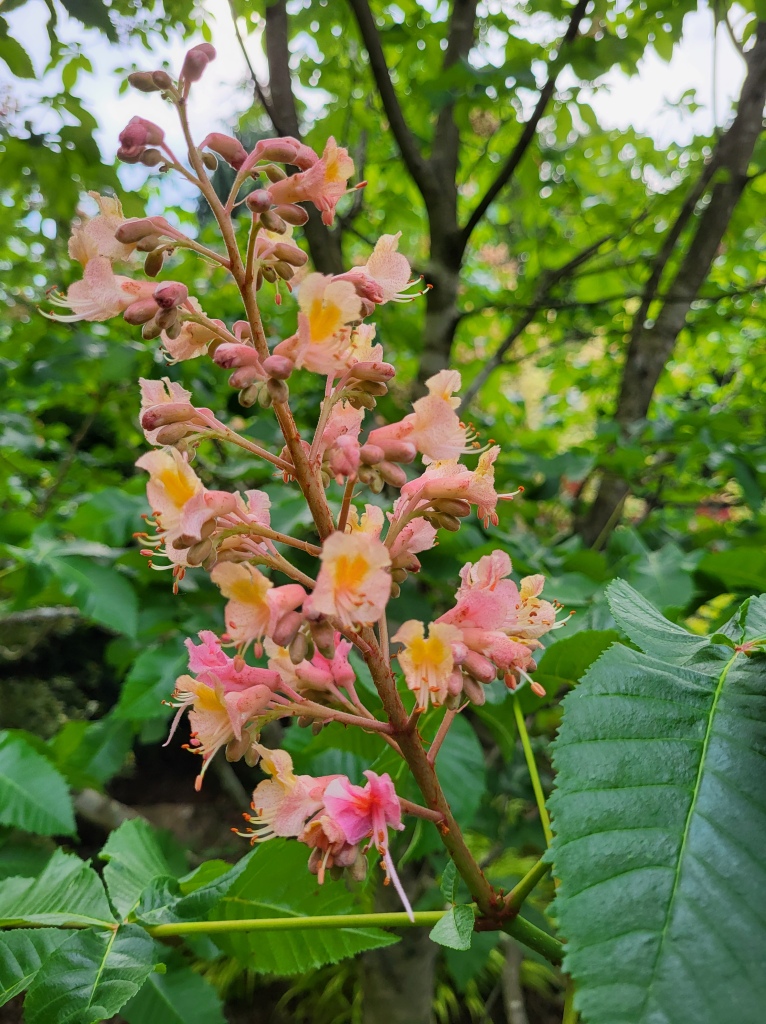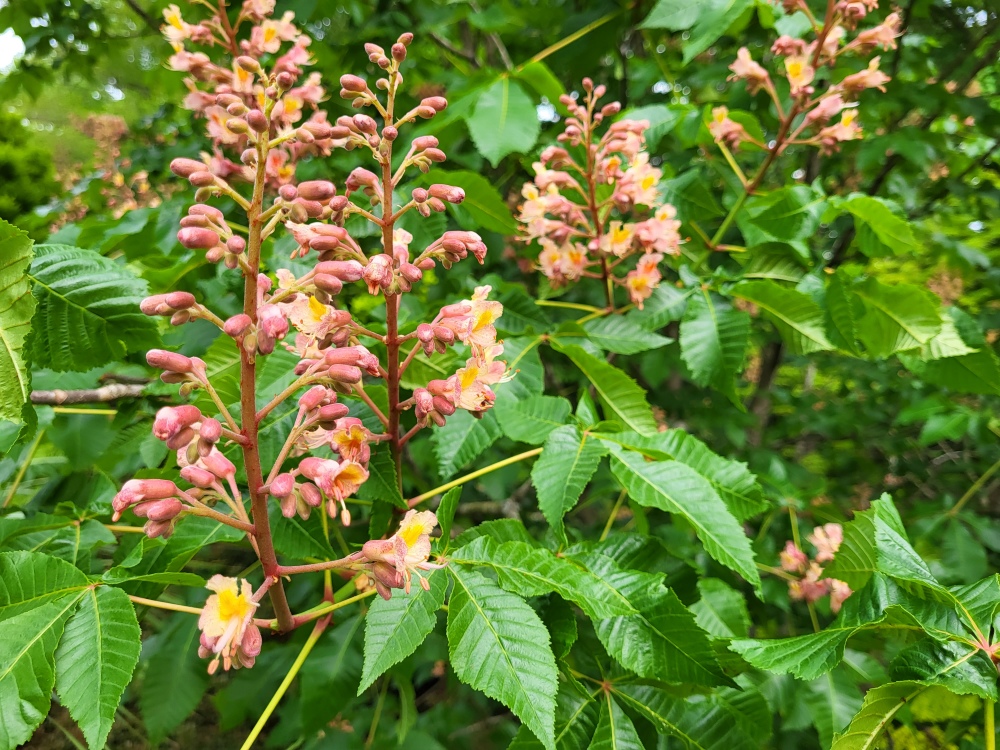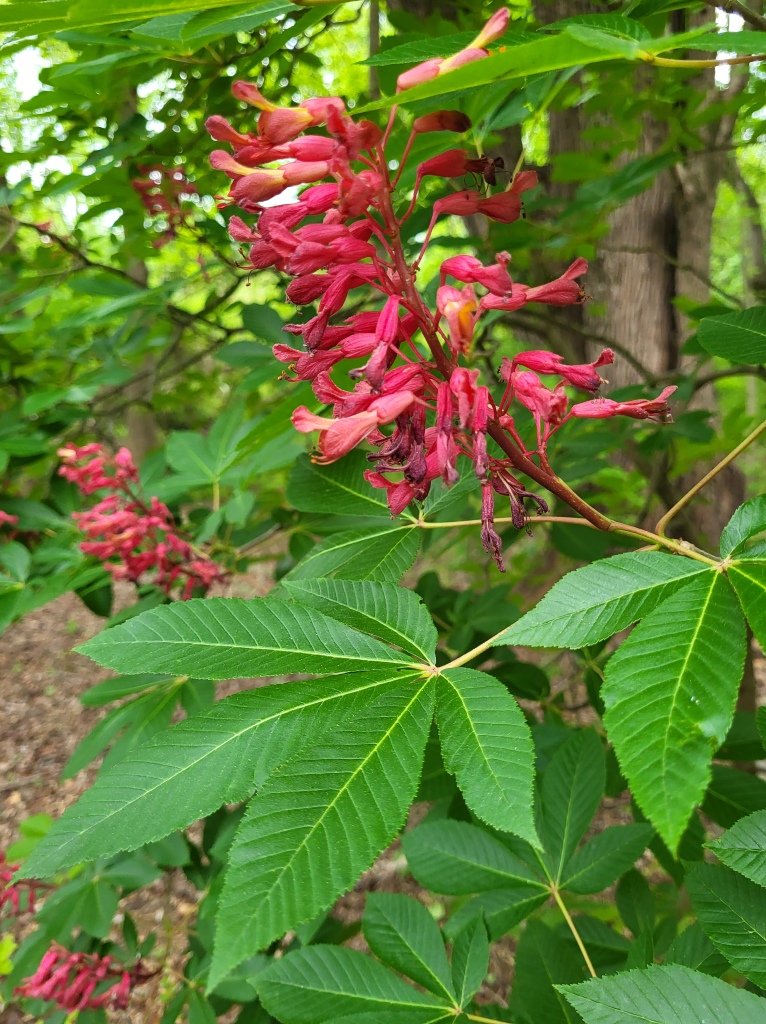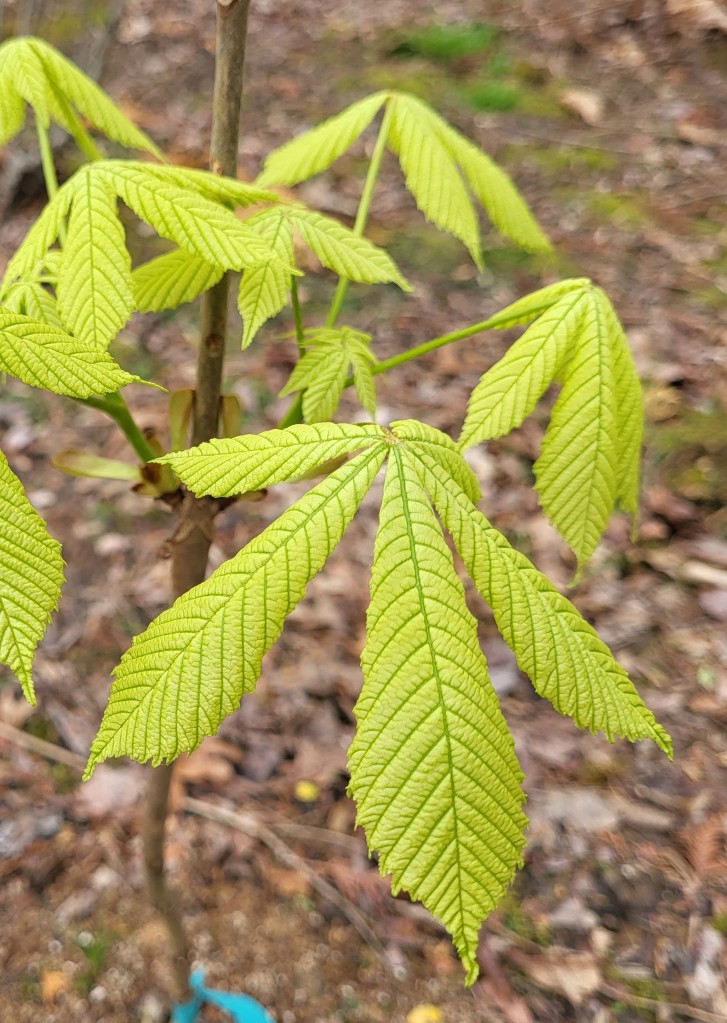I am often mystified, and again wonder why the red horse chestnut (Aesculus x carnea, below) is not more widely planted in gardens. Yes, it lacks splendid autumn leaf coloring, and occasionally its foliage is spotted by late summer with our plentiful rainfall, humid days, and warm, muggy nights. Still, there is no better tree when a large tree is desired, but not one that reaches the monstrous proportions of oaks, maples, or beech.

No tree of this medium size compares to its superb foliage, but it is its glorious mid-spring blooms that are most remarkable. Despite their encroachment on the lower layer of shrubs, I will not remove lower branches so the abundant flowers can be enjoyed close up (below). Some creative pruning will be required in several years so that neighbors can coexist.


Most years, I think flowers of the red buckeye (Aesculus pavia, below) have faded by the time the horse chestnut blooms, and while the buckeye is fading I am overjoyed that cooler temperatures have encouraged its flowers to hang around a bit longer. The buckeye is a tall shrub, and when it was planted I did not anticipate the area becoming so deeply shaded. This does not seem to inhibit flowering at all, and again its attractive leaves and flowers are exceptional anywhere in the garden but particularly in the shade where flowering choices are fewer.

Happily, I report that the variegated horse chestnut ( Aesculus hippocastanum ‘Memmingeri’, below) recovered from deer munching its first set of leaves. While deer and rabbits continually plague the garden, they do little overall damage, and I would not prefer to be rid of them but instead that they behave and not munch on newly planted favorites. Good luck with that.

The last of the buckeyes to flower is the bottlebrush buckeye (Aesculus parvilfora, below) with white blooms in early summer. Earlier, I reported that this sprawling, well established shrub has grown branches along the soil that have now rooted. I haven’t a clue what took so long, and I will soon cut and transplant a few that are well rooted to spread them along this shaded border of the garden. With these new low branches the shrub has also grown substantially, further enclosing the garden so that while I’m within the rest of the world disappears from view.

I totally agree with you on why more people don’t plant red horse chestnuts. I have one, but find them rather rare here in southern NH. On the other hand, disease has taken a toll, and mine has shrunk in size due to this canker disease. But I really do love the foliage and blossoms!
To see the red horse chestnut today should convince anyone that the late summer leaf spotting is a minor distraction. This does not inhibit growth, so it’s hardly a problem.
I have wondered about this for a very long time. I found it to be an exemplary street tree that seems to be grander than it actually is. The roots are remarkably complaisant with surrounding pavement. It produces none of the obnoxiously big seeds that the native buckeye produce. Yet, the native buckeye is more common merely because it is native! The native buckeye defoliates for summer, so looks dead and provides no shade!